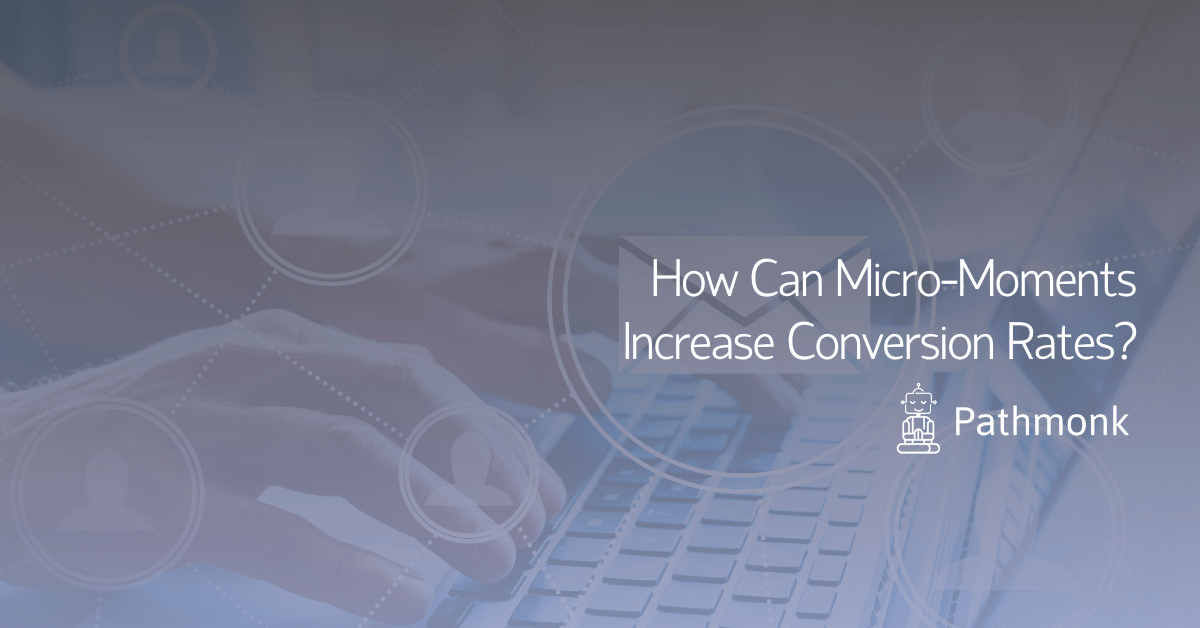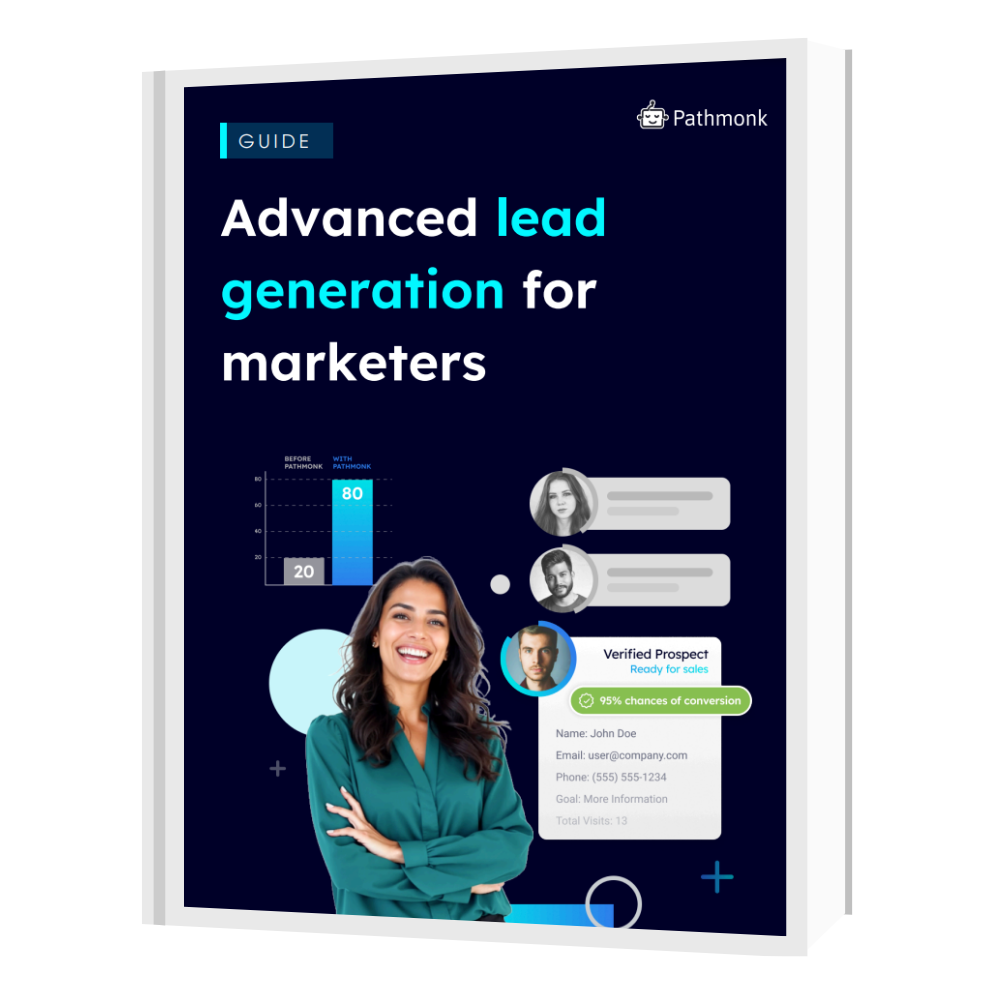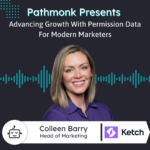
In the six years since Google first introduced the idea of micro-moments, the concept has evolved from simple consumer insight to a game-changing marketing tactic.
The internet-driven world we live in today is one of fast-moving, fast-thinking impulses, and consumers demand that new-age browsing keeps up with their pace. A large part of this is linked to the use of smartphones in daily life.
There are almost 4 billion smartphones users worldwide. Studies predict that by the year 2025, 72% of the global population are most likely to use their mobile device as their only tool for browsing the internet.
With that much information in your pocket at all times, micro-moments are on the rise. So too should businesses’ interest in leveraging them as a marketing tool. Pathmonk is here to help you capitalize on these moments and use them to your business’s advantage.
Generate better leads to grow your sales
Discover new strategies to unlocking a flood of high-quality leads from your website.

What Is a Micro-Moment?
Do you ever find yourself in a situation where you suddenly have the overwhelming urge for information of some kind? It could be the nearest fro-yo station or how regularly you should be cleaning your stove, and you immediately head online to find answers? Well, that is a micro-moment.
Google describes them as “intent-rich moments” when a consumer’s immediate craving for knowledge draws them instinctively to the internet – predominantly via their smartphone. These moments are often when snap decisions are made. If you have a sudden need for sugar and search for the best patisserie in your area, then the chances are the top result can expect your imminent visit.
Breakdown and Examples
Micro-moments can be categorized in four ways:
- Want to Know: A burning question in your mind that demands an immediate answer
Examples-
What is the temperature right now in Bali?
Where was the first-ever drive-in cinema?
What vaccinations are recommended for a kitten?
- Want to Go: Directions, local information, searching for a location of some kind
Examples-
Where to apply for a renewal on my driver’s license in my area right now?
Where is the nearest dry cleaner, and how do I get there?
Best Italian restaurant in my city?
- Want to Do: Looking for a guide, “how-to” information
Example-
A simple recipe for an apple tart
How to change the oil in my car?
Best way to remove a wine stain from a carpet?
- Want to Buy: Consumers with a purchase in mind, searching for deals and potential vendors
Example-
Best deals on home and content insurance
Summer beach clothes are on sale now
Cheap deals on second-hand jeeps
In each category, there are three common threads. Most searches are based on what is best, what is here, and what is available now. The type of search a consumer makes tells you a lot about their behaviors and helps you better understand their needs.
Someone searching for “the best” is not looking to make a rash decision. This consumer wants to know more about why they should choose one particular service above the rest. To make your business stand out to this person, you should protome your USPs.
The “here” or “near me” consumer is relying on personalization. They want their information filtered and targeted to them in their current area. Having targetted landing platforms for different locations is an effective way to appeal to this consumer.
If the focus is on the “now,” it displays a sense of urgency. It could be a last-minute decision, an emergency, or just an impulsive need but what matters is the moment. A fast and streamlined response is what this person needs.
Read ResearchGate’s extensive report on understanding micro-moments here.
How Does Micro-Moments Marketing Work?
Forrester describes micro-moments as “the next frontier” for mobile marketing.
Smartphones are the key to micro-moments marketing as most of the impulse moments happen when people are out and about. The marketing value of these moments is the response from your brand or website when a search is made.
Think of a time you were struggling with a task. You probably took out your phone and searched for answers or advice on how to finish it successfully. If, for example, you could not get the grease stain out of your favorite shirt and the top search result told you that Product X was a sure-fire solution, it may find itself on your shopping list.
You would not be alone in this scenario. Studies have reported that 91% of active smartphone owners do the very same thing. It could be IT-related, car-related, health-related, or really any task where a person may require some advice. If your brand utilizes this type of moment in its marketing strategy, you can increase the chances of your name being the one that pops up in their moment of need.
Let’s look at it from another marketing angle. If your website can tailor its response based on the micro-moment the consumer is having, their experience is improved. Improved buyer experience means a sale is more likely to happen. A pet insurance company that sets up a unique and targeted response to someone searching specifically for puppy care can stand out from the sea of dog insurers not paying close enough attention to the demand.
Click here to learn more about how micro-moments can improve buyer experience.
This marketing strategy is about making sure your brand or website shows up in the right place at the right time. Pathmonk solutions can help you pre-empt micro-moments for your relevant consumers and anticipate how best to react. If you know enough about your clientele to know what they are likely to search for, you can tailor your marketing to respond directly to their questions.
When fast results are in demand, relevance is key. Someone looking for answers “right now” is not going to spend hours wading through content to find what they need. Streamlining the experience for your customer is key to capitalizing on a micro-moment.
As a marketing strategy, micro-moments combined with intent data can also be a successful way to generate leads and benefit B2B sales.
Check out this article to learn more about how Pathmonk uses intent data to generate leads.
How to Increase Conversion Rates Using Micro-Moments: A Step-By-Step Guide
- 1. Understand the persona of your buyer
Your marketing should be centered around your buyer, but how can it be if you don’t know who they are? Pathmonk can provide insight into the persona active on your website.
- 2. Research buyer intent
Find out what type of micro-moments your consumers are having. Do they need “the best,” “the now,” or “the here?” Surveys are a good way to access this information.
- 3. Optimize your site for SEO
Streamline your content based on what the buyer wants and needs. Implement AI, re-evaluate your keywords, find new ways to communicate – all to increase your rank on search engines and your brand’s visibility.
- 4. Map the moments
If you don’t keep track of what micro-moments are attracting people to your site, you miss out on a deeper understanding of what brings you success. Mapping the interactions show where consumers are engaging with your brand. Check out Google’s guide to journey mapping here.
- 5. Keep tracking and evolving
This is not a one-time process. Technology is not slowing down, and neither can you. What is working now may not work in two months, and the micro-moments that are happening now may not be relevant in the next season. The key to successful micro-moment marketing is keeping up with the pace and evolving with your consumer base.
What Do the Experts Have to Say?
There is a lot of love out there for this strategy, and for good reason. The impact micro-moments have on brands and consumers alike cannot be ignored.
DiGo’s Mark DiMassimo is an expert on behavioral change marketing and speaks about the importance of matching the tone of your buyer’s intent. He also is a fan of AI and the way it can help tailor micro-experiences. Watch the full Mark DiMassimo interview here.
Tom Lyman, marketing director of data preservation company, Arkivum, highlights the importance of pop-ups and calls to action in response to customer intent. He also discusses how to ensure they are appropriate and effective. Watch the full Tom Lyman interview here.
Micro-Moments with Pathmonk
Micro-moments are one of Pathmonk’s solutions for high conversion rates.
These solutions help you dive into a world of untapped data to convert micro-moments into sales. With so many success stories, it is easy to understand why Pathmonk is trusted and valued by so many companies.
Learn more about how ZND boosted conversion rates using Pathmonk and micro-moments here.
Final Thoughts
Micro-moments are an essential part of modern marketing. They not only help increase conversion rates and improve your buyer journey, but they give you an invaluable in-depth understanding of who your customer is and how your business needs to function.
Evolution is the word of the moment for mobile marketing, and failure to evolve means failure to survive. More and more business is being conducted as a result of impulsive micro-moments and searched punched into a smartphone on the go. Successfully utilizing this trend to your advantage is a game-changer for modern commerce.
Understand your customer journey analytics
See how your users behave, find drop-offs, and receive actionable insights with AI.









